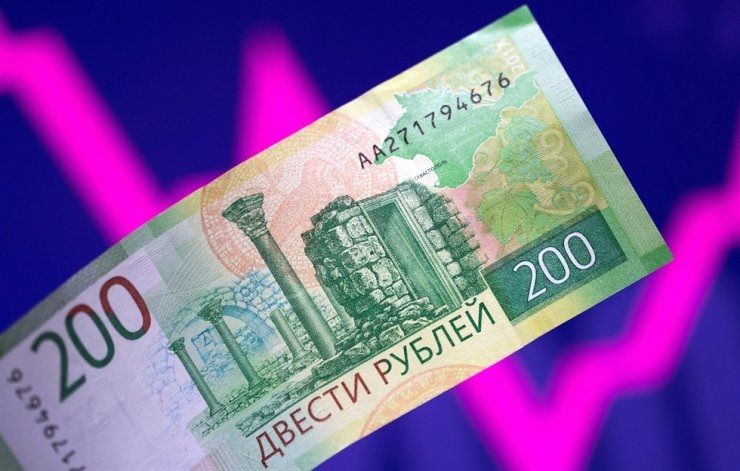FXOpen

As the Russian energy industry continues to take settlements from Western customers in rubles and inflation across the European and North American continents continues to rise as an equal issue festers alongside it, that being the extreme increase in the cost of living, the ruble is once again on the rise.
Yesterday, our report noted that the ruble had begun this week at a 5-year high at just over 58 rubles to the US Dollar, however today it has inched forward even more and stands at 57.5 rubles to the US Dollar.
There could be many reasons for this, but the main one has to be the move by the Russian government to insist that settlement of the physical delivery of gas and oil to many Western countries has to be made in rubles via banks in Moscow.
Previously, gas and oil which was supplied to Western countries had been settled in Euros and US Dollars, depending on whether the customer was a European nation or the United States, and the European Union receives 40% of its natural gas supplies from Russia and 27% of its oil supplies from Russia.
Upon invoking sanctions on businesses and commercial bank accounts held by Russian companies in Europe in March this year, the European Union and the United States began to freeze bank accounts held by Russian companies in Europe and the United States, meaning that the supplying companies in Russia, most of which are state owned or partially state owned, began to raise concerns that they would not be able to access their money if the payment for gas and oil was made in Euros or US Dollars to accounts in Europe or North America that had been frozen due to sanctions
Therefore, the Russian government began to issue notices that if they wish to continue to pay for oil and gas, customers in regions which have participated in invoking sanctions including the freezing of bank accounts of Russian companies, they would have to open accounts in rubles with a bank in Moscow and transfer the payments to that account in order that the oil and gas suppliers can be paid.
This created an immediate link between two vital consumable commodities and the ruble, and the value rose sharply.
It also caused customers of Russian oil and gas companies in Europe and North America to be subject to the high cost of having to make foreign exchange transactions from Euro and US Dollar-denominated accounts in Europe and the United States into rubles, and the ruble is notoriously volatile and subject to high spreads when making forex transactions.
This circumstance, which has now become an almost industrial standard, has linked the ruble to oil and gas, and at a time during which oil and gas prices are very high, the ruble is being pulled along with the demand.
Conversely, the Euro and US Dollar have become subject to the interest rate rises and inflation in their home territories, and now also face the loss of their use as a worldwide settlement currency for oil and gas, as they now only settle in other OPEC countries.
Without doubt, this is one of the most interesting dynamics to watch in today's Forex and commodities marketplace.
This article represents the opinion of the Companies operating under the FXOpen brand only. It is not to be construed as an offer, solicitation, or recommendation with respect to products and services provided by the Companies operating under the FXOpen brand, nor is it to be considered financial advice.
Stay ahead of the market!
Subscribe now to our mailing list and receive the latest market news and insights delivered directly to your inbox.








